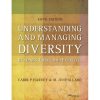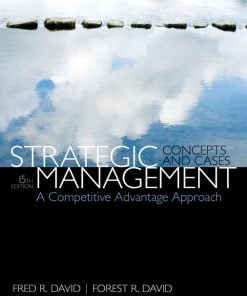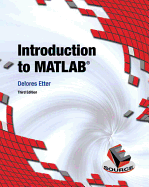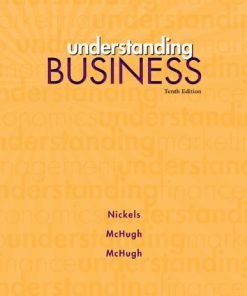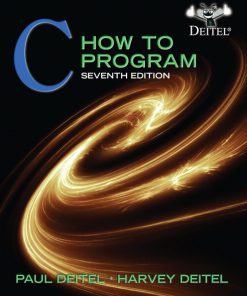Solution Manual for Motivation Theory, Research, and Application, 6th Edition
$35.00 Original price was: $35.00.$26.50Current price is: $26.50.
Solution Manual for Motivation Theory, Research, and Application, 6th Edition
Solution Manual for Motivation Theory, Research, and Application, 6th Edition

Product details:
- Hardcover : 496 pages
- ISBN-10 : 1111841098
- ISBN-13 : 978-1111841096
- Author: Herbert L. Petri
With its signature focus on evolutionary psychology, MOTIVATION: THEORY, RESEARCH AND APPLICATION, 6E reflects the latest developments from the field in its thorough coverage of the biological, behavioral, and cognitive explanations for human motivation. The book clearly presents the advantages and drawbacks to each of these explanations, allowing readers to draw their own conclusions. The authors help readers understand the processes that activate their behavior by drawing examples from such relevant topics as sleep, stress, eating disorders, helping behavior, emotion, and more. Extremely reader friendly, the book includes vivid graphic illustrations that offer additional insight into key concepts.
Table contents:
- PART I: OVERVIEW
- Ch 1: Overview: Conceptualizing and Measuring Motivation and the Role of Evolution in Motivation
- Chapter Preview
- Introduction
- Angie’s Problem
- The Concept of Motivation
- The Measurement of Motivation
- Characteristics of Motivation
- The Study of Motivation: Categories of Analysis
- Levels of Analysis
- Analysis of Angie’s Problem
- Major Constructs in Motivation
- Philosophical and Physiological Roots of Motivational Theory
- The Flow of Ideas about Motivation
- Evolution and Motivation
- Sex
- Interim Summary
- Higher Motives?
- Evolution
- Instincts, Emotion, Thoughts and Behavior
- The Authors’ Bias
- Summary
- Key Terms
- Suggestions for Further Reading
- Web Resource
- Ch 1: Overview: Conceptualizing and Measuring Motivation and the Role of Evolution in Motivation
- PART II: PHYSIOLOGICAL MECHANISMS OF MOTIVATION
- Ch 2: Genetic Contributions to Motivated Behavior
- Chapter Preview
- Introduction
- Early Instinct Theories
- Classical Ethology
- Some Modifications to the Basic Ideas of Ethology
- Ethological Concepts Concerning Sex and Aggression
- Modern Ethological Approaches
- Summary
- Key Terms
- Suggestions for Further Reading
- Ch 3: Physiological Mechanisms of Arousal
- Chapter Preview
- Introduction
- Arousal Theory
- The Reticular Activating System
- Psychophysiological Measures
- Sleep
- Dreams
- Physiology of Sleep
- Brainstem Neural Flip-Flops
- A Sleep Chemical
- Possible Functions of Sleep
- Stress
- Endocrine System Activity and Stress
- The General Adaptation Syndrome
- Life Change, Stress, and Illness
- Health Psychology
- Psychoneuroimmunology
- Placebo Effects
- Sexual Arousal
- Summary
- Key Terms
- Suggestions for Further Reading
- Ch 4: Physiological Mechanisms of Regulation
- Chapter Preview
- Introduction
- What Do We Eat: Taste and Smell as Gatekeepers
- Why Do We Eat?
- What Determines How Much We Eat?
- Sensory Specific Satiety
- Basic Metabolism
- Local Theories
- Central Theories
- Homeostatic Regulation
- Regulation of Hunger
- Energy Regulation: Two Processes or One?
- Nonhomeostatic Eating Behavior
- Failure of Regulation
- Cross-Cultural Evidence of Anorexia
- Neurobiology of Anorexia
- Heredity Factors
- Brain Structures Involved in Anorexia
- Bulimia Nervosa
- Obesity
- Hunger Regulation Reconsidered
- Regulation of Thirst
- Extracellular and Intracellular Mechanisms
- Nonhomeostatic Drinking
- Inhibitory Control of Drinking
- Regulation of Sexual Motivation
- Summary
- Key Terms
- Suggestions for Further Reading
- Web Resources
- Ch 2: Genetic Contributions to Motivated Behavior
- PART III: THE BEHAVIORAL APPROACHES: LEARNING, INCENTIVES, AND HEDONISM
- Ch 5: Learned Motives: Classical, Instrumental, and Observational Learning
- Chapter Preview
- Introduction
- Pavlovian Classical Conditioning
- Instrumental Conditioning
- Classical-Operant Interactions in Motivation
- Learned Helplessness
- Observational Learning (Modeling)
- Learning and Aggression
- Classical Conditioning and Aggression
- Instrumental Conditioning and Aggression
- Sexual Motivation and Learning
- Summary
- Key Terms
- Suggestions for Further Reading
- Web Resources
- Ch 6: Incentive Motivation
- Chapter Preview
- Introduction
- Incentives as Energizers
- Incentives as Generators of Emotion
- Incentives as Carriers of Information
- Predictability
- Klinger: Meaningfulness
- Incentive Aspects of Sexual Motivation
- Learned Sexual Stimuli
- Female Attractiveness
- Male Attractiveness
- Incentive Motivation and Physical Addictions
- Behavioral Addictions
- Summary
- Key Terms
- Suggestions for Further Reading
- Web Resources
- Ch 7: Hedonism and Sensory Stimulation
- Chapter Preview
- Introduction
- Hedonism
- P. T. Young: Sign, Intensity, and Duration
- Sensory Stimulation and the Hedonic Continuum
- Pain
- Novelty, Curiosity, and Exploratory Behavior
- Behaviors Released by Stimulation
- Sensation Seeking
- Opponent-Process Theory: Hedonism Revisited
- Summary
- Key Terms
- Suggestion for Further Reading
- Web Resources
- Ch 5: Learned Motives: Classical, Instrumental, and Observational Learning
People also search:
motivation theory research and application 6th edition pdf
approaches to social research 6th edition pdf free download
motivation theory research and applications 6th edition pdf free
motivation theory research and applications 6th edition pdf free
Related products
Solution Manual
International Accounting Doupnik 4th Edition Solutions Manual
Solution Manual
Solution Manual
Understanding Business Nickels 10th Edition Solutions Manual
Solution Manual
Solution Manual for Data Structures and Other Objects Using C++, 4/E Michael Main, Walter Savitch
Solution Manual
Solution Manual for Introduction to Robotics Mechanics and Control 3rd Edition by Craig


